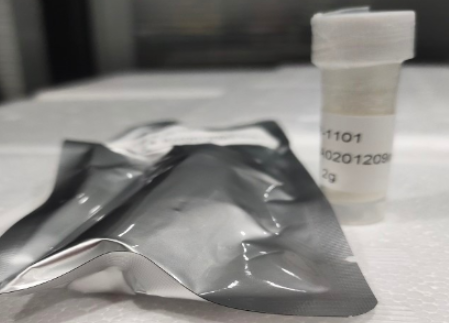FA-PEG-PEI修饰磁性纳米载体在TFPI-2 pDNA吸附与保护中的性能研究
文献:Preparation and Characterization of Folate-Targeted Fe3O4 Nanoparticle Codelivering Cisplatin and TFPI-2 Plasmid DNA for Nasopharyngeal Carcinoma Therapy
作者:Juan Zhang, Huanhuan Weng, Xiangwan Miao, Quanming Li, Siqi Wang, Huifen Xie, Tao Liu, Minqiang Xie
文献链接://onlinelibrary.wiley.com/doi/full/10.1155/2017/2849801
摘要:
The FA-PEG-PEI@SPION-CDDP was constructed with SPION-CDDP (core) and FA-PEG-PEI (shell). Numerous detached electropositive amino groups in the shell covered SPION-CDDP nanoparticles were able to electrostatically adsorb electronegative TFPI-2 pDNA. To explore the binding ability of FA-PEG-PEI@SPION-CDDP with TFPI-2 pDNA, gel electrophoresis was observed in Figure 3(a). It was found that with the increasing mass ratio of FA-PEG-PEI@SPION-CDDP/TFPI-2 {Figure 3(a)~B (1 : 4) → C (1 : 2) → D (1 : 1)}, more TFPI-2 was blocked in sample well. When the mass ratio was equal to or more than 2 (Figure 3(a)~E), TFPI-2 pDNA was restricted completely in the well, indicating entirely adsorption and encapsulation by FA-PEG-PEI@SPION-CDDP. As a result, the relative mass ratio was determined as 2 : 1 to synthesize the final complex. To investigate the protection of TFPI-2-loaded complex (FA-PEG-PEI@SPION-CDDP-TFPI-2) against DNase-I degrading, FA-PEG-PEI@SPION-CDDP was mixed with overdose TFPI-2, then various content of DNase-I was added to run electrophoresis. As shown in Figure 3(b), compared with TFPI-2 migration without DNase-I in Figure 3(a)~B, the more DNase-I was added, the more detached TFPI-2 was degraded with more fade band of TFPI-2 migration. When DNase-I was equal to or higher than 15 units, the detached TFPI-2 (Figure 3(b)~J, K) was entirely digested except for the sample well. This evidence shed light on the enzymatic hydrolysis of DNase-I in TFPI-2 pDNA and indicated that FA-PEG-PEI@SPION-CDDP is feasible in adsorbing TFPI-2 and protecting pDNA from degradation. Thus pDNA could avoid digestion by DNase in media or blood before reaching the targeted cells, leading to an efficient transfection in tumors.


 pg电子娱乐游戏app
微信公众号
pg电子娱乐游戏app
微信公众号 官方微信
官方微信